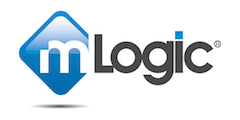
mLogic in Post Magazine August 2018
mLogic (www.mlogic.com), founded in 2011 by Roger Mabon, is known for its cutting edge mTape and mSpeed solutions. Finding that many teams are using the two solutions in tandem, mTape for long-term archival needs after post, and the mSpeed RAID solutions for live editing and redundancy, Mabon says that many of the company’s solutions are tailored to the VFX and edit needs of a production.
With Mac-centric designs, the mLogic retinue starts with products as diminutive as the very affordable $99 mBack, a zero-footprint hard drive designed to mount to iMacs or Apple Displays. But the company’s offerings expand far further, capable of accommodating full editing teams with or without shared access to drives. Its rack-mountable and tower solutions have ports to connect directly to a computer as well as dedicated connection to provide a metadata controller with encoding for oversight over sharing and access. “We have a very, very unique system in the mSAN line, that’s a shared system, so you can hook multiple Macs and PCs or a combination thereof directly to the box and share,” says Mabon, who started the successful G-Technology brand of hard drives in 2003 before selling to Hitachi Global Storage Technologies(HGST) in 2009. Multiple mLogic systems can share the RAID storage over Thunderbolt for connected interoperability.
He continues that the company’s spinning and solid state drives both see a lot of usage from VFX. The a ordability and speed of spinning drives make them attractive to some, while the performance, reliability and longer lifespan of solid state will make them a choice for others. With Thunderbolt 3, mLogic is able to bring the best of both worlds through its mSpeed solutions, fault tolerant RAID arrays for high performance read-and-write applications. mLogic’s software is provided for free with every purchase, giving safety checks and progress reports. The program will even allow drag-and-drop usage with mLogic’s mTape LTO archival solution.
“I’ve sold hundreds of thousands of external hard drives and RAID systems in my career,” he explains. “I guess people in general just don’t understand that you can’t leave a hard drive sitting on a shelf. I realized that all of those hard drives that are sitting around are going to lose their data... LTO tape is not only the safest place to archive your footage, it is also the most affordable on a cost-per-terabyte basis.”
He admits that cloud storage is also a safe, redundant solution, but the costs inherent to maintaining a lot of data can be prohibitive. In addition to safety concerns, the remote access to footage in cloud storage can also be costly in terms of upload and download times.
